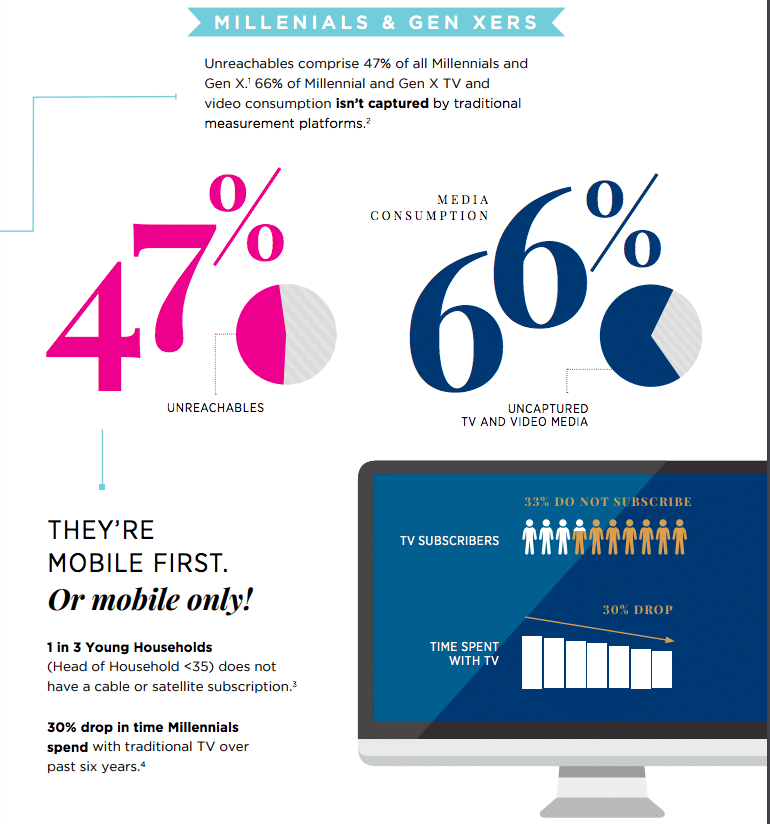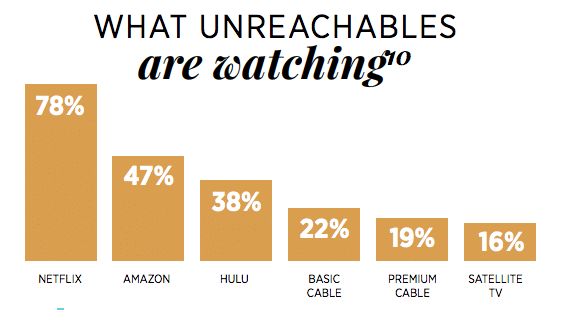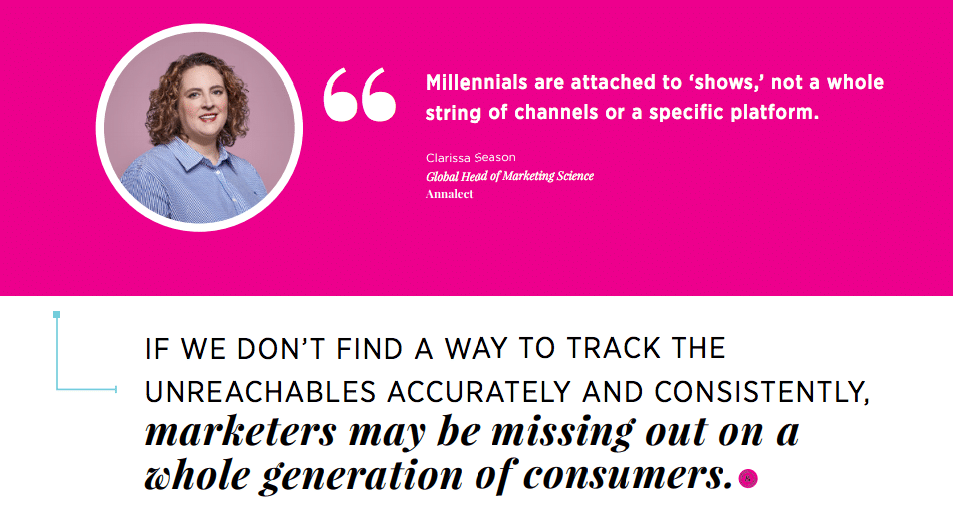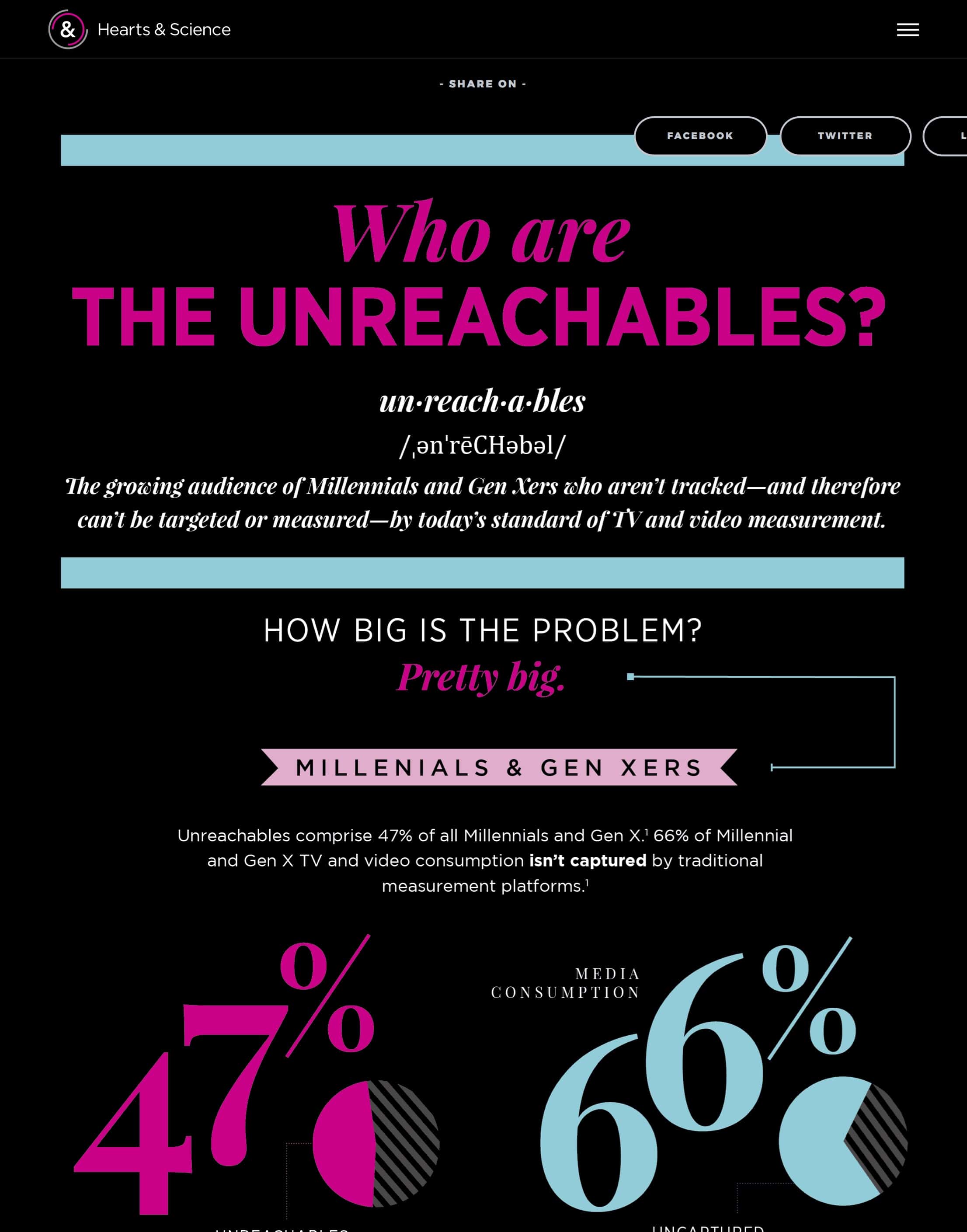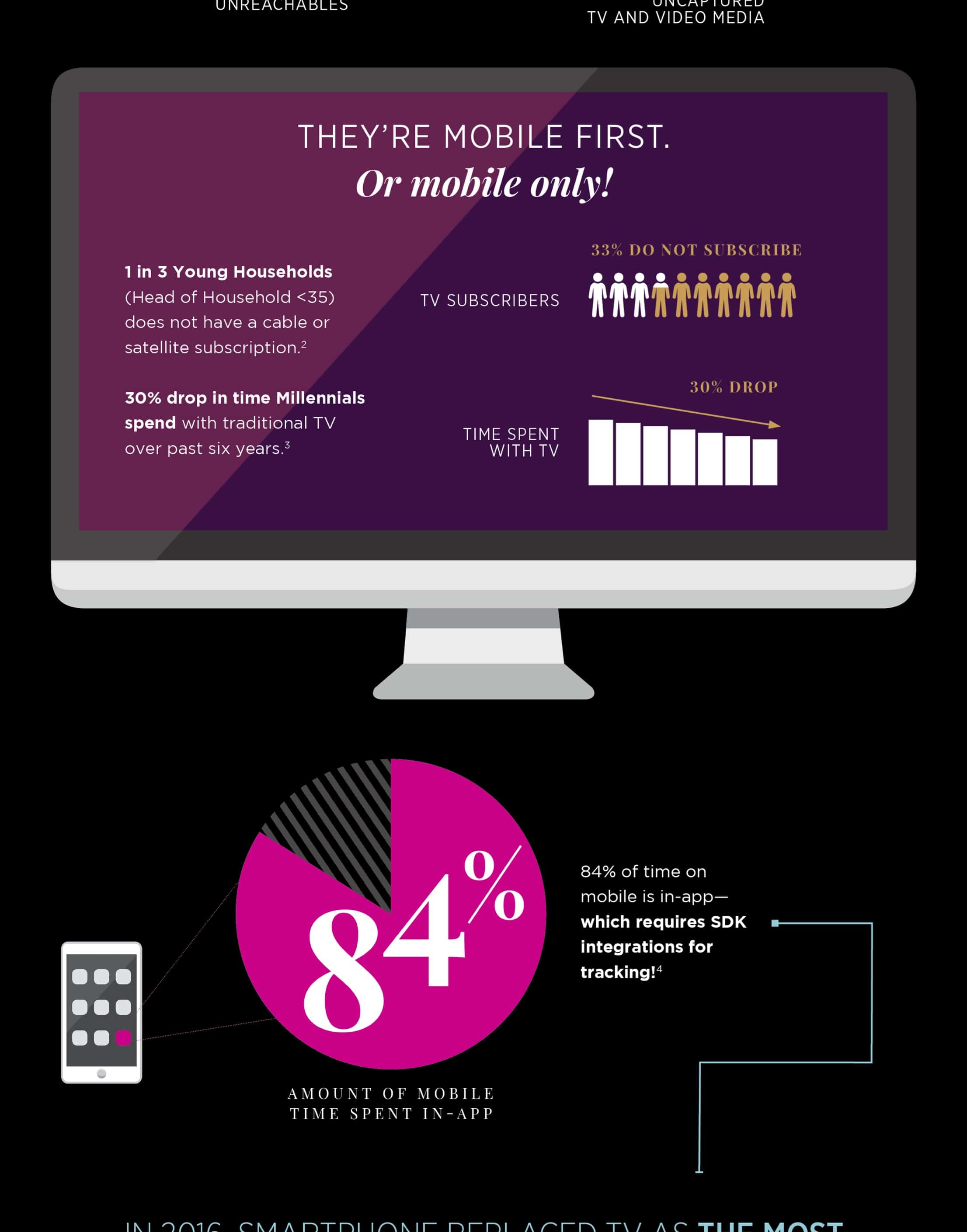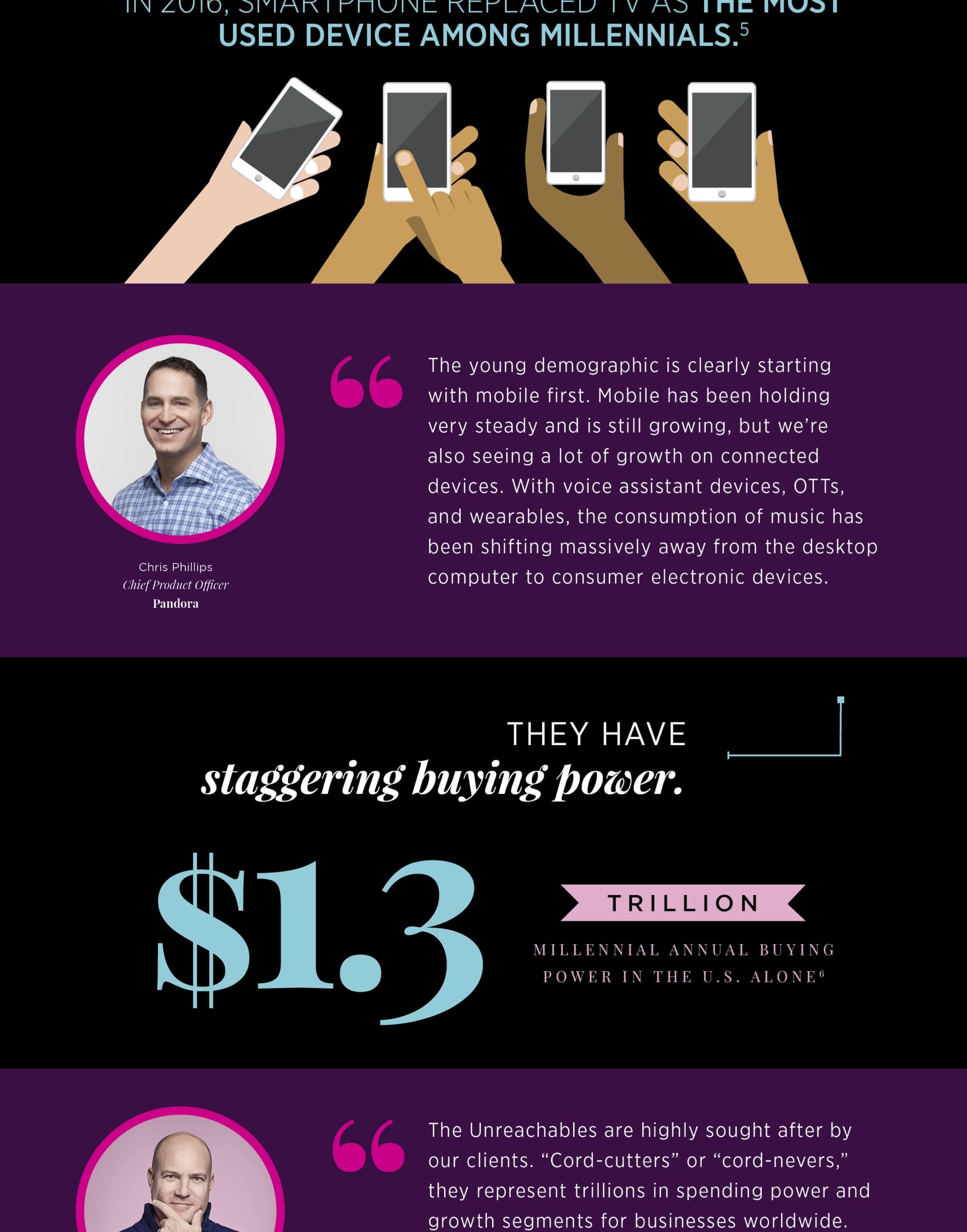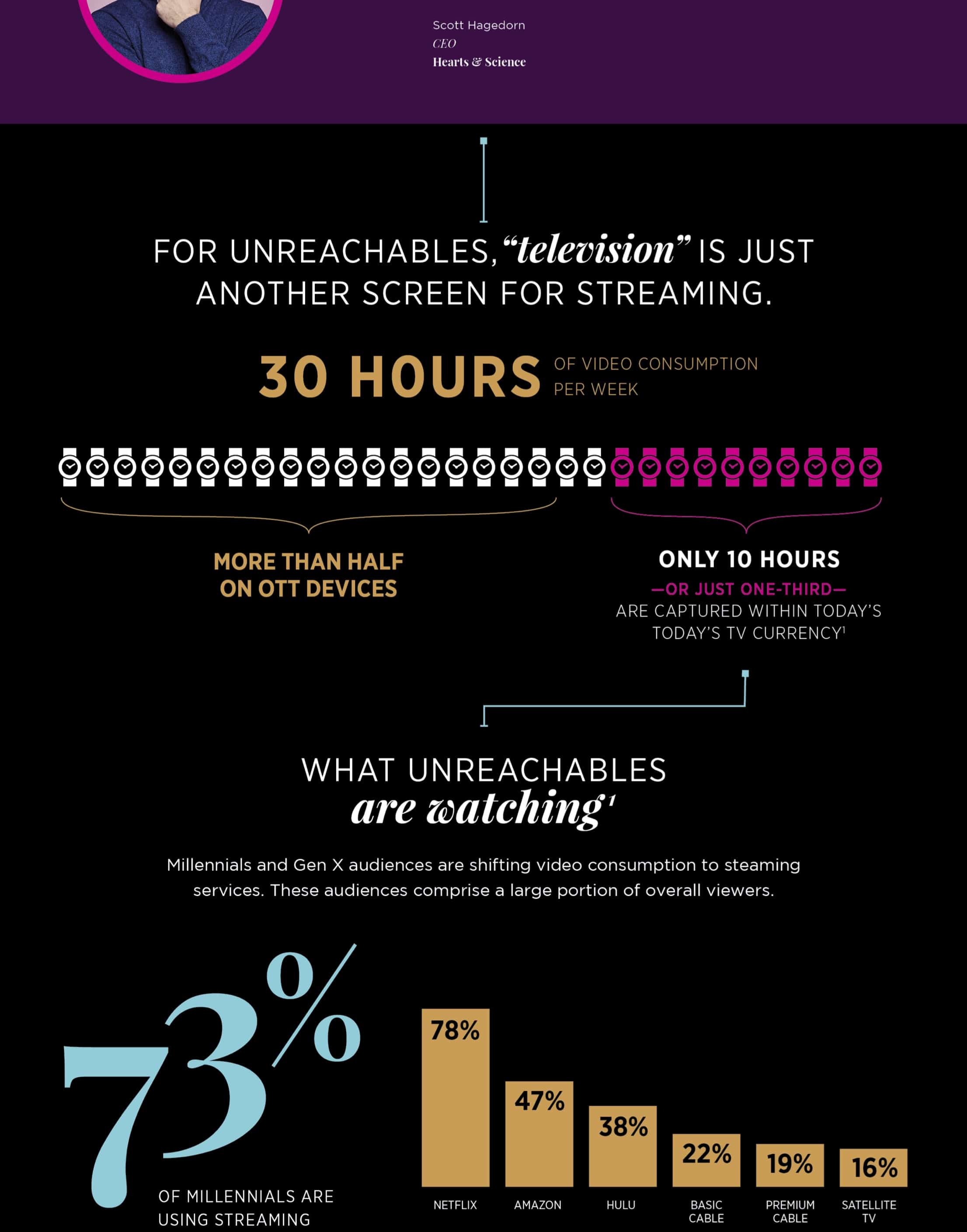While traditional measurement firms like Nielsen, comScore and Kantar do an adequate job estimating content and advertising audiences on traditional TV screens, there are big gaps in the data when it comes to measuring content and ad exposure in-app on mobile and tablet devices, on OTT devices like AppleTV and Roku, and via streaming services like Hulu and Netflix.
As a result, two-thirds (66 percent) of TV and video content consumed by combined Millennial and Gen X (MGX) audiences is not being captured by current measurement platforms, according to new research from Omnicom Media Group agency Hearts & Science
According to the survey and ethnography research, MGXers (adults 22-45) report spending an average of 30 hours per week consuming TV and video content—but traditional TV platforms account for only 10 of these hours. The remaining 20 are divided between TV content viewed on other devices (such as in-app on mobile or via OTT devices) and streaming content viewed across all devices.
Barriers to cross-platform measurement include slow adoption of Nielsen’s Digital Content Ratings Software Developer Kit (SDK), which requires integrating code to measure in-app content and ad consumption (at the publisher’s expense) on literally every platform, device and client app supported by that publisher. And while Nielsen Digital TV Ratings do include streaming TV content via digital OTT devices, mobile apps, and browsers, the digital content and ad load must be identical to that of the original broadcast—which is rarely the case, since ad content is generally changed as content crosses environments to leverage viewer preferences.
According to the study, the issue of unmeasured platforms becomes even more critical when factoring in the 47 percent of MGXers who report zero hours consuming content on traditional TV platforms—meaning that they exclusively consume TV and video via devices outside of the measurement coverage map. Because today’s currency of TV measurement is not equipped to capture the whole story of this segment’s media consumption, the study authors have dubbed these viewers “Unreachables”—reflecting the fact that existing planning tools are based on metrics that will guide buying away from reaching this audience.
“Mobile and streaming innovation bring about new creative opportunities, but they also create a complex problem that can be summed in a simple statement: if it can’t be measured, it can’t be properly targeted or planned against as part of a cohesive, cross-platform campaign,” said Hearts & Science CEO Scott Hagedorn, in a news release.
Until the measurement currency catches up with shifts in audience behavior, marketers must reconsider their old advertising playbook of demo targeting and reliance on TV ratings in order to reach and engage with this distracted generation of consumers. Planning systems must be adjusted to account for the glaring gaps in the measurement data, and new mobile datasets leveraged as they emerge. Agencies and marketers alike need to aggressively champion the adoption of open SDKs that make it easier for publishers and broadcasters—and their audience—to be counted.
In other words, Unreachables can be reached—provided marketers, agencies and content producers unite to move the measurement beyond the entrenched practices.
A three-day qualitative on line discussion board in May 2017 among 21 MGXers including Millennials: 22-37 years old (n=14); and Gen-Xers: 38-45 years old (n=7), who consume at least three hours of media content across any device/platform a day. A national quantitative online survey conducted in June 2017 among 1,482 MGXers who consume at least three hours of media content across any device/platform a day, including: 701 [Un]Reachables: MGXers who consume zero hours of televised content on traditionally measured TV platforms; Millennials: 22-37 years old (n=992); Gen-Xers: 38-45 years old (n=490) African Americans: (n=183), Hispanics (n=142). Sample representative to US Census.


